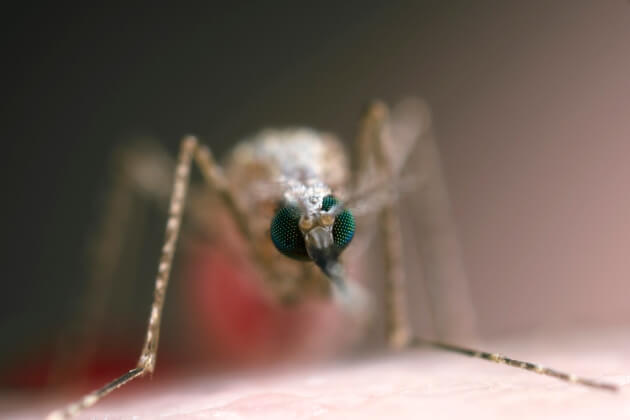California researchers hatched some malaria-resistant mosquitoes and then gave evolution a shove – using a groundbreaking technology to ensure the insects pass on that protective gene as they reproduce, with implications far beyond the promise of fighting malaria.
They inserted DNA into the germ line, cells that pass on genes from generation to generation, of the species, creating mosquitoes with genes that prevent malaria transmission by producing malaria-blocking antibodies that are passed on to 99.5 percent of offspring.
University of California-San Diego biologist Ethan Bier called this a “potent tool in sustainable control of malaria”, as all the mosquitoes in a given region would carry anti-malarial genes. The goal is to release genetically modified mosquitoes to mate with wild mosquitoes so that their malaria-blocking genes enter the gene pool and eventually overrun the population, short-circuiting the species’ ability to infect people with the parasites. Results appear this week in the early online edition of Proceedings of the National Academy of Sciences.
Gene drives are just the latest example of the fantastic power of CRISPR editing to alter the DNA of living things, which has already set off a debate over the possibility that gene editing could be used to generate designer human babies (see “Engineering the perfect Baby”). James used that system in mosquitoes to introduce two genes that his past work showed would cause resistance to the malaria pathogen. During mating, a gene drive inherited from one parent inserts itself into the gene inherited from the other parent, ensuring that future generations will almost always inherit the drive.
Gene drive works like an embedded Sorcerer’s Apprentice, making copy after copy of the inserted genes. The one problem with this is that if you want to implement it, you have to make sure that these anti-malaria mosquitoes are successful and create many offspring, so in a way, it becomes counter productive to eliminate mosquitoes and you have to let them suck a lot of blood and spread out. They inherit regular DNA from the other parent.
The new study focused on the Anopheles stephensi mosquito, which accounts for 12% of malaria transmissions in India and carries the P. falciparum strain. “This is a significant first step”, said Professor Anthony James at the University of California, Irvine.
But the new drive got a flat tire in female mosquitoes. With this breakthrough “we can recruit the mosquito to help us out”.
They found almost 100 per cent of offspring inherited the trait, which was unprecedented. This was the gene drive. To measure, they tacked on a fluorescence gene that made mosquitoes’ eyes look red if they harbored the new gene.
Two of the genes make antibodies that attack the malaria parasite, Plasmodium. Those antibodies bind to the parasite’s surface and halt its development. The antibodies, as hoped, interrupted the parasite’s life cycle within the insect.
The scientists had their doubts that it would work. “No one had ever shown that some of these genes would function as we hoped”.
“Accidental or malicious release of a gene drive system into the wild could have unpredictable ecological consequences and thus researchers must use multiple safeguards that are robust to human error and nefarious actions”.
“We’re a hop, skip, and jump away from actual gene drive candidates for eventual release”.
Other scientists also have been working to create genetically engineered mosquitoes.
Prof Anthony Shelton who studies pest management at Cornell University in New York said the California-based team was justified in its optimism over the procedure. “This new study marks a significant advance toward the development of this strategy”. Getting such a big piece of DNA into the mosquitoes proved difficult; only two of 25,712 larvae screened had the glowing red eyes that indicated they carried the gene drive.
“This experiment is intrinsically much less likely than fruit flies to accidentally spread, since [the Asian malaria mosquito] does not breed in California”, said Harvard biologist George Church, who signed the letter and, with Esvelt, has applied for a patent on gene drive. But Esvelt said he would have liked the California team to develop a “reversal drive”, which could undo the genetic changes their gene drive produced, “just in case something did go wrong”.
Because the antiparasite genes should continue to spread ad infinitum among a mosquito population, national and worldwide regulations need to be worked out before gene drives are deployed in the field, adds social scientist Kenneth Oye from the Massachusetts Institute of Technology in Cambridge.
Malaria is contracted when a bite from a female mosquito carrying the malaria parasite is released into the bloodstream.
